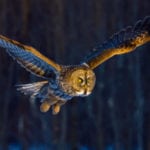 Weird Stuff
Weird Stuff  Weird Stuff
Weird Stuff  Our World
Our World 10 Ways Your Christmas Tree Is More Lit Than You Think
 Movies and TV
Movies and TV The 10 Coolest Stars to Set Sail on The Love Boat
 History
History 10 Things You Didn’t Know About the American National Anthem
 Technology
Technology Top 10 Everyday Tech Buzzwords That Hide a Darker Past
 Humans
Humans 10 Everyday Human Behaviors That Are Actually Survival Instincts
 Animals
Animals 10 Animals That Humiliated and Harmed Historical Leaders
 History
History 10 Most Influential Protests in Modern History
 Creepy
Creepy 10 More Representations of Death from Myth, Legend, and Folktale
 Technology
Technology 10 Scientific Breakthroughs of 2025 That’ll Change Everything
 Weird Stuff
Weird Stuff Ten Bizarre Facts About The Doge Meme
 Our World
Our World 10 Ways Your Christmas Tree Is More Lit Than You Think
 Movies and TV
Movies and TV The 10 Coolest Stars to Set Sail on The Love Boat
Who's Behind Listverse?

Jamie Frater
Head Editor
Jamie founded Listverse due to an insatiable desire to share fascinating, obscure, and bizarre facts. He has been a guest speaker on numerous national radio and television stations and is a five time published author.
More About Us History
History 10 Things You Didn’t Know About the American National Anthem
 Technology
Technology Top 10 Everyday Tech Buzzwords That Hide a Darker Past
 Humans
Humans 10 Everyday Human Behaviors That Are Actually Survival Instincts
 Animals
Animals 10 Animals That Humiliated and Harmed Historical Leaders
 History
History 10 Most Influential Protests in Modern History
 Creepy
Creepy 10 More Representations of Death from Myth, Legend, and Folktale
 Technology
Technology 10 Scientific Breakthroughs of 2025 That’ll Change Everything
10 Amazing Acts Of Cooperation Between Different Animal Species
Interactions between two species can take many forms. Predators hunt prey, humans tame animals, groups compete for territory, and so on. Most meetings between different species of animals could arguably be described as antagonistic or aloof. But positive, mutually beneficial interactions occur as well. Some of these collaborations can be incredible and unexpected.
10Ravens Guide Wolves To Prey
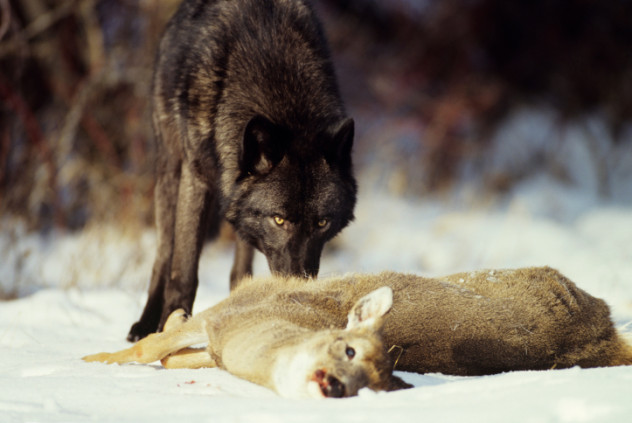
In the past, gray wolves were considered too dangerous to tolerate and were nearly annihilated in North America by the 1970s. Populations have been recovering since then. Their reintroduction to Yellowstone National Park has had a beneficial and stabilizing effect on the local ecosystem, particularly where scavengers during the winter months are concerned.
Even without wolves, many herbivores still die of starvation toward the end of winter. While this provides an initial feast for scavenging animals, much of the meat ultimately goes to waste as only so much can be consumed before it’s all too decomposed. With wolves added back in, herbivore death is more spaced out while still providing ready meals for scavengers since, unlike other animals such as bears, wolves tend to move away from their kill after they’ve eaten their fill.
Ravens have learned to maximize the benefits of wolf leftovers. During winter, they’ll land and croak near prey in order to get wolves’ attention, guiding them to their next meal. Of course, this places the raven in a prime position to feast on the leftovers. Perhaps as a result, wolves have also been noted to be surprisingly tolerant of ravens feeding close to them.
9Carrion Beetles And Their Mite Minions
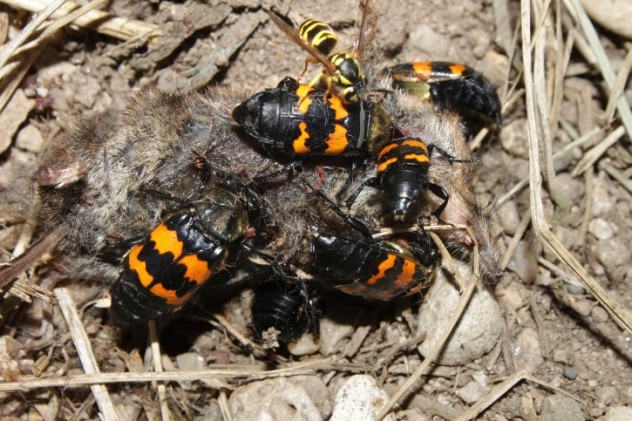
In nature, an animal carcass is a gift that rarely goes unused. American carrion beetles, as the name suggests, live a lifestyle that revolves around dead animals. Their body shapes are even optimized for crawling under, or possibly inside, corpses. The smell of a newly deceased and decomposing animal will soon bring the beetles—sometimes bearing a load of mites on their backs.
The beetles lay their eggs in the rotting meat, which will serve as nourishment for their larvae. They are hardly the only species to use a carcass in such a manner, so inevitably these larvae will face other insects’ larvae as competition. Unlike other species, such as various flies, the carrion beetle only lays its eggs in dead animals as their larvae must eat meat to survive. The adults eat the rival species’ larvae but, given the abundance of competitive species, they can’t destroy all of their progeny’s rivals.
This is where the carrion beetles’ passengers come in. Upon arrival at a fresh corpse, the mites disembark and swarm the body, eating any larvae or eggs that do not come from carrion beetles and greatly reducing the competition. The carrion beetles will then carry the mites to the next body they find. It’s possible that the mites also clean bacteria from the beetles themselves while being given the free ride.
8Daniel Greene And His Seizure Snake
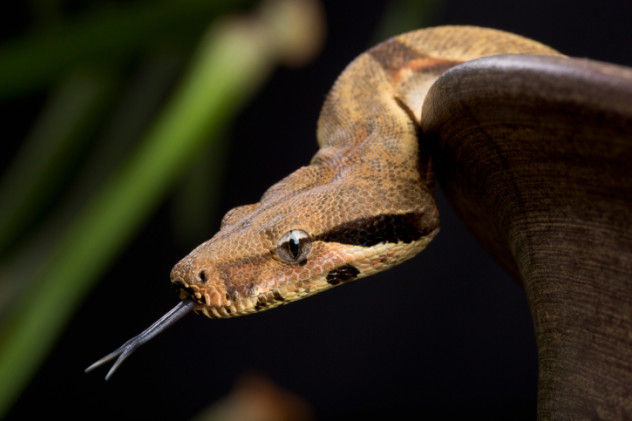
You may have heard of seizure dogs that can detect oncoming seizures in their owners and warn them accordingly, but what about a seizure snake? Daniel Greene of Shelton, Washington certainly has. He employs Bedrock, his 1.5-meter (5 ft) boa constrictor as just such a service animal. Greene, who suffers from grand mal seizures, often carries Bedrock draped around his neck. He noticed that when a seizure was coming on, Bedrock would stiffen and squeeze his neck slightly.
Since then, Bedrock has been instrumental in giving him enough warning to de-stress, take medicine, or do whatever else must be done to either prevent the seizure or endure it as safely as possible. The difference is hard to miss; when Bedrock is asleep at night, Greene’s seizures occur unchecked.
Greene’s method of seizure prevention has caused him difficulty, unfortunately. Some store managers balk at having a customer with a snake draped around his neck. Being a service animal, Bedrock is legally allowed by the Americans with Disabilities Act to accompany Greene in public. Sometimes, he’s still asked to leave, however. Greene says he doesn’t mind leaving a store if asked politely, but he takes offense when managers try to assert that Bedrock isn’t a real service animal.
7Badgers And Coyotes Team Up
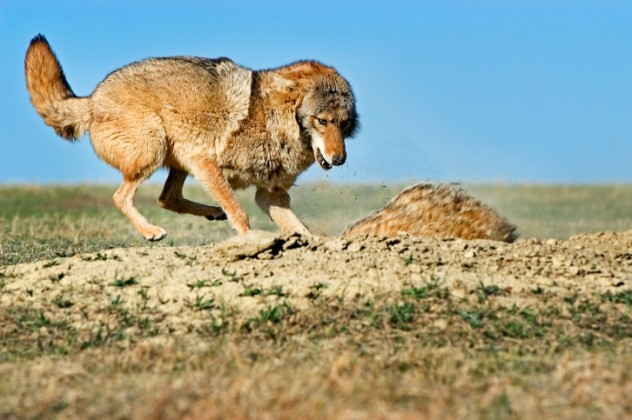
Badgers and coyotes share a common predilection toward taking various burrowing rodents as prey, though they catch them in very different ways. Rodents such as squirrels and prairie dogs have no chance of outrunning a coyote, but they can always escape into their burrows. A badger, on the other hand, can dig into the ground and tear a rodent from its burrow provided the rodent doesn’t simply run out of another exit and leave the badger with no hope of catching it. A badger-coyote team could certainly tip the odds against their common prey if two competing predators could manage to work together.
As it turns out, they do. Native Americans have spoken of these collaborations for years, and more recently scientists have documented it as well. When badgers and coyotes work together to catch prey, they complement each others’ respective strengths. The badger digs prey out from the ground, and the coyote runs it down. These cooperative efforts are most likely to occur between a badger and one lone coyote, as opposed to groups of coyotes.
6Frogs Protect Spider Eggs For Shelter
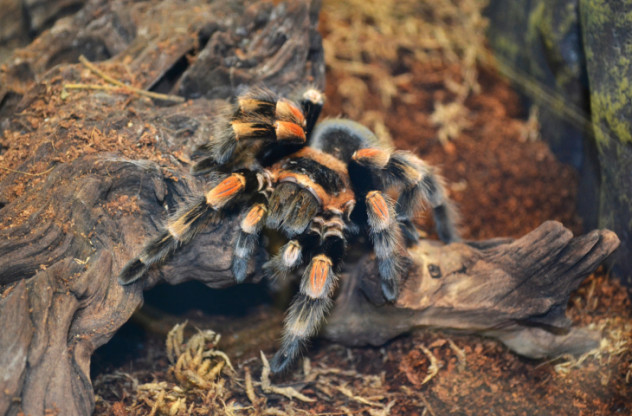
The formidable Colombian lesserblack tarantula could easily eat an animal as small as the dotted humming frog, but it doesn’t. It’s arguable that the small frogs are unpalatable to the spiders, but there is more at work than mere taste. The spider and frog have been observed sharing burrows created by the spider. Some Colombian lesserblacks have even been observed cohabitating with more than one humming frog.
Often, these frogs have to crawl over or under the tarantula in order to enter or exit the tunnel, and they are still not attacked. The spiders will pick them up and examine them but will then release them. They are thought to recognize the frogs via chemical cues.
The two species share a mutually beneficial arrangement. Many other predators that might otherwise dine on the dotted humming frog wouldn’t dare enter the burrow of a large hunting spider to do so. The frogs can also feast on small invertebrates attracted to the remains of the spider’s kills. Additionally, a spider burrow makes a great microhabitat for a frog. So, how do these amphibian roommates pay their rent? The humming frogs eat ants, including those that might otherwise eat the Colombian lesserblack’s eggs.
5Seeing Eye Gobies
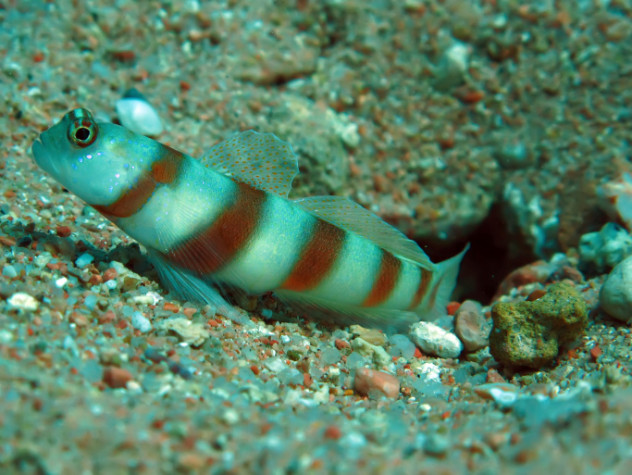
Pistol shrimp are named and known for their ability to snap their claws so rapidly that it creates a high pressure jet of water which can ward off predatory fish or stun prey. Even as armed as their arms are, it’s a big ocean outside a pistol shrimp’s burrow where a hungry predator might come swooping in at any time. Compounding the danger, pistol shrimp do not have particularly good eyesight.
This is where certain species of goby come in. Gobies, with their significantly better eyesight, act as the pistol shrimp’s eyes. Much like a human being led by a seeing eye dog, the goby’s tail fins remain in constant contact with the shrimp’s antennae as the two go about daily activities. If a predator is seen, the goby’s tail will signal the shrimp to retreat, which the goby will also do if the danger comes close enough. At night, the goby rests with the shrimp inside the free shelter provided by its tunnel. Pistol shrimp in such relationships will not go out without their goby assistants.
4CIA-Trained Spy Ravens
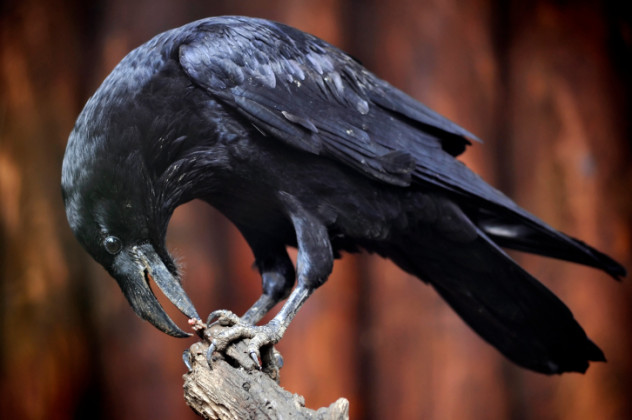
B.F. Skinner’s operant conditioning (a generic example of which would be giving a dog food in exchange for doing a trick) has proven to be a very useful principle. Many applications have been derived from operant conditioning, including a seemingly innocuous tourist attraction that sprung up in Hot Springs, Arkansas in the 1960s. Called the I.Q. Zoo, this theme park featured animals trained to perform humanlike activities, such as chickens playing baseball, pigs playing the piano, and raccoons playing basketball.
The cheerful I.Q. Zoo was also a government-funded testing ground for other applications of animal training such as espionage research. Ravens proved to be a particularly good subject in this regard. In addition to being able to carry surprisingly heavy loads, the ravens’ intelligence enabled them to be trained to do surprisingly specific tasks, even opening file drawers and carrying file folders.
It was therefore a simple matter to teach ravens to fly to a certain location indicated with a laser pointer and deposit objects, including surveillance devices. Ravens could even be trained to take pictures with a special camera carried in the bird’s beak. The animals would again be directed to a window with a laser pointer where they were trained to press the little spy camera against the window. Each press took a picture.
3Moray Eel Tunnel Rats
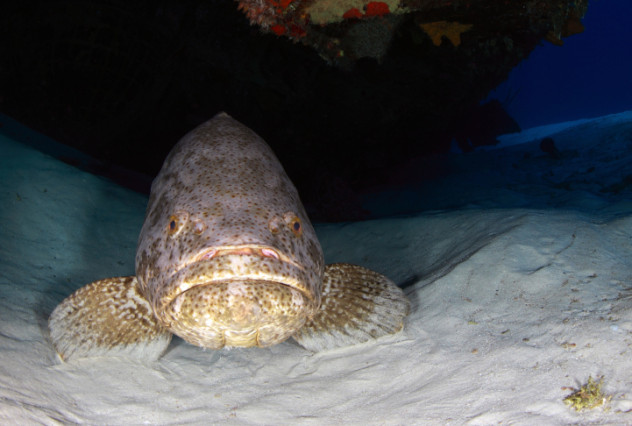
Perhaps it’s not too surprising to believe that coyotes, animals associated with pack hunting, might team up with badgers to catch prey, but what about two considerably less sociable fish? Groupers and moray eels are almost literally day and night when compared. Groupers hunt during the day out in the open. Of course, a prey animal pursued by a grouper can easily escape by hiding in a crevice or hole. Conversely, the more nocturnal morays sneak through narrow spaces in coral reefs to catch prey.
In the Red Sea, some groupers have learned to solicit assistance from morays. If a grouper’s quarry takes shelter where the grouper can’t reach, it will swim to a moray’s den. The grouper shakes its head rapidly right at the mouth of the crevice, drawing the moray out despite the daytime hour. The moray is then led by the grouper to wherever the prey is hiding, a spot which the grouper will sometimes indicate with more shaking.
The moray then enters the hole and kills the prey. Sometimes, the moray then eats the prey itself, but other times it gives it to the grouper. This sort of cooperative hunting has never before been observed in two different species of fish. Marine biologists have noted sufficient variability in the groupers’ execution of moray leading to believe that it is in fact a learned behavior as opposed to instinct.
2Meat Ants Give Caterpillars The Royal Treatment
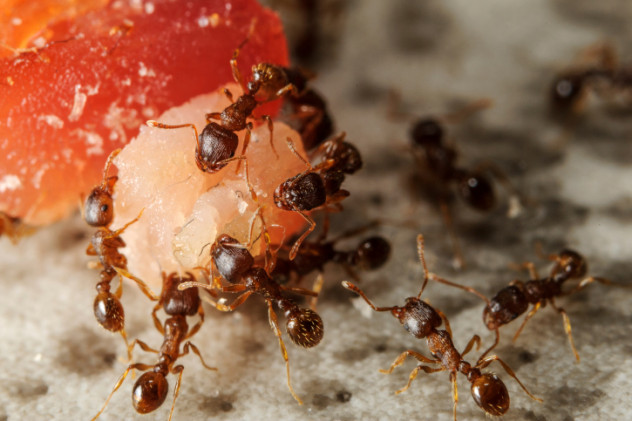
Meat ants, also known as gravel ants, are an incredibly territorial species native to Australia. They fiercely patrol the very well-defined boundaries of their territories, which rarely overlap with other meat ant colonies. If this occurs, groups of ants will meet, stand on their front legs, and kick each other with their hind legs. This ritualized abdomen kicking can last for days, though few ants die.
Other species aren’t treated as well. Other invertebrates encroaching upon the meat ants’ territory are swarmed, killed, and sometimes eaten by the omnivorous ants. Large numbers of angry workers can drive off larger animals despite their lack of stingers; the ants release foul-smelling chemicals and will bite repeatedly. The areas around their colonies, which can span as much as 650 meters (2,100 ft), may become devoid of species that are unable to coexist with them.
Certain species of caterpillar, however, not only coexist but are welcomed by the meat ants. The caterpillars in question secrete a sugary fluid that the ants consume. As a result, meat ants will protect these caterpillars from predators. In some cases, the caterpillars are kept in the ants’ colonies and carried to plants to feed. (Human farmers can also benefit from meat ant colonies; dead livestock dropped on a meat ant nest will be reduced to bones, a convenient method of disposal.)
1Old Tom The Whaling Killer Whale
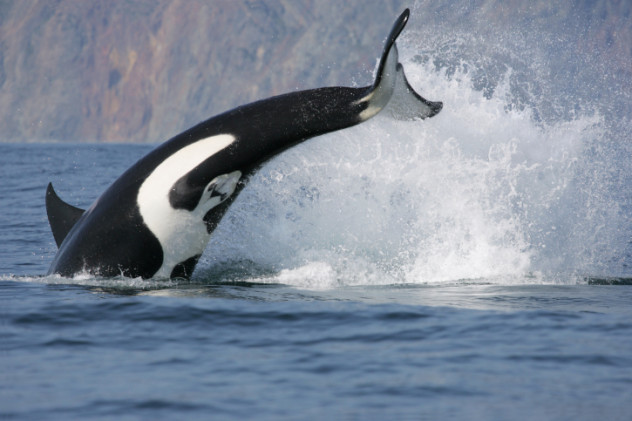
Twofold Bay, near Eden, Australia, is the third deepest natural harbor in the southern hemisphere and a known gathering point for whales; it is an ideal spot for whaling. During the 1860s, the Davidson family had a long-running and established whaling station on its shores.
Each year, as winter moved in so did a pod of orcas. Initially, the Davidsons feared that they would interfere and take whales for themselves, but something else happened. The pod, led by a male who would become known as Old Tom, would drive baleen whales into Twofold Bay and trap them there. Next, Old Tom would swim to the whaling station and jump and slap the water with his tail to get the whalers’ attention.
The whalers would then go out in their boats to catch the trapped whales. Some say the orcas even protected the men by driving away sharks. When a whale had been caught and killed, its body would be left tethered in the water overnight. Old Tom and his pod would eat the lips and tongues of the whales, leaving the more valuable parts to the Davidsons. This arrangement became known as the Law of the Tongue.
The Davidsons and Old Tom’s pod maintained their working relationship for three generations of the family. Old Tom died in 1930, and his skeleton is on display at the Eden Killer Whale Museum. Soon after Old Tom’s death, his pod disappeared and was not seen again. No orcas have cooperated with whalers in such a way since.
Anthony wonders if he can train his cat to do his taxes next year in exchange for bacon jerky.


